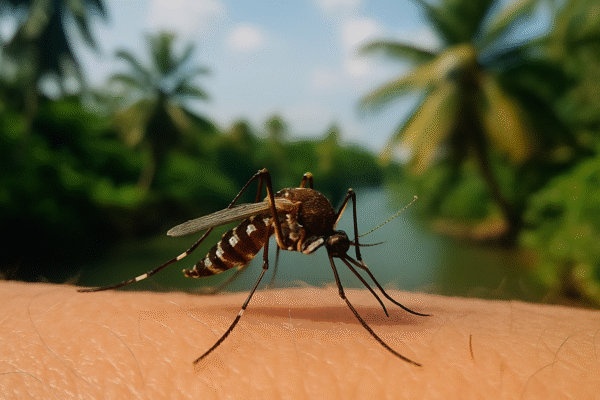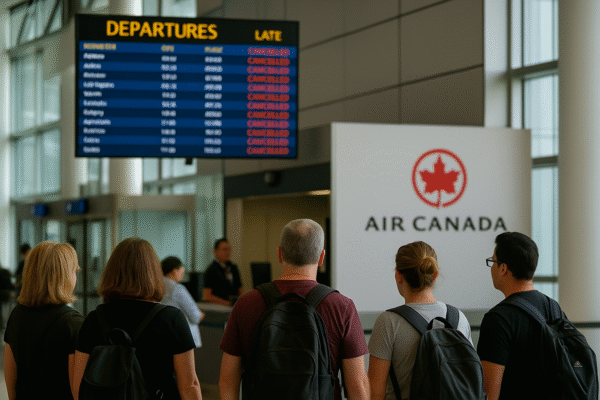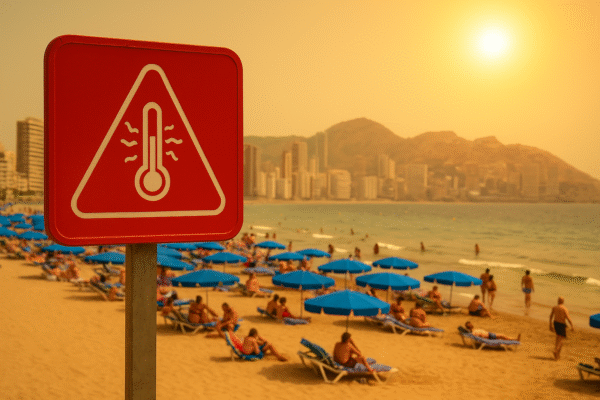As one of Europe’s sunniest beach destinations, Benidorm has long drawn sun-seekers and families chasing Vitamin D-soaked holidays. But this late August brings unprecedented intensity: Spain’s national meteorological authority, AEMET, has issued a red alert for extreme heat in the region—an official warning that tourists and locals alike shouldn’t ignore.
Expectations are grim: official temperatures could climb to 40 °C, while the “feels like” index—factoring in humidity and heat stress—may soar toward 49 °C during the early afternoon. These conditions place physical exertion and prolonged outdoor exposure squarely in the danger zone.
Fire and Fury: Wildfire Risks Compound the Heat
Spain is already grappling with widespread wildfires, many ignited or worsened by this sweltering spell. The country has deployed additional resources—including nearly 1,900 troops—to contain the flames and protect at-risk communities. The ferocity of recent blazes has prompted urgent appeals for EU solidarity and amplified public concern around environmental safety and traveler preparedness.
Tourists on Caution Alert: How to Stay Safe in the Searing Sun
If you’re planning or already enjoying a getaway in Benidorm, here are critical safety suggestions to minimize heat-related hazards and make the most of your holiday:
- Hydrate Constantly
Bring a reusable water bottle and sip regularly—even before you feel thirsty. - Avoid Peak Heat Hours
Between midday and 4 PM, temperatures spike. Reserve outdoor adventures for early morning or late evening. - Seek Shade and Air-Conditioning
Museums, shopping centers, and beach cafés with good ventilation offer welcome reprieve from the sun’s glare. - Dress Light and Protect Yourself
Choose breathable, loose-fitting clothing, wide-brimmed hats, sunglasses, and high-SPF sunscreen. Don’t forget a water mister or umbrella. - Know the Warning Signs
Symptoms like dizziness, nausea, rapid heartbeat, confusion, or muscle cramps may signal heat exhaustion or even heatstroke. If you notice these, move to a cooler place and hydrate immediately—or seek medical help. - Be Especially Careful with Vulnerable Groups
Children, seniors, and individuals with underlying health issues are more susceptible. Ensure they’re shaded, well-fed, and cooled frequently.
Local Businesses Rise to the Challenge
Many hotels, restaurants, and attractions are stepping up. You’ll find extra hydration stations, mist zones, and expanded air-conditioned lounging areas. Tour operators are adjusting excursion schedules, prioritizing early starts and evening programs to circumvent the worst heat.
Stay Informed—It Could Save Your Trip
Red alerts in Spain signify extreme risk, and local authorities are urging everyone to stay plugged in—via AEMET’s bulletins, municipal channels, or in-resort notifications. While the worst conditions are expected today, the high fire danger and heat are not yet behind us, and readiness is still essential.
Benidorm’s Summer Sunshine—Managed, Not Marred
Despite these challenges, Benidorm’s beaches, scenic walks, and vibrant evening life take on a different kind of appeal amid the heat. A dawn swim, a shaded park stroll, or a rooftop cocktail at sunset can still feel magical when done smartly. The heatwave doesn’t have to ruin the fun—it just calls for a heat-savvy holiday mindset.
Quick Safety-at-a-Glance
| Tip | Advice |
|---|---|
| Hydrate | Drink water frequently |
| Avoid peak hours | Stay out of sun from 12–4 PM |
| Dress wisely | Lightweight, sun-protective wear |
| Watch for symptoms | Know heat exhaustion warning signs |
| Aid vulnerable people | Keep kids, elderly in shade & cooled |
| Follow local updates | Check AEMET and resort advisories |
Final Thoughts
Benidorm’s striking coastline and buzzing nightlife remain a draw this August—but the heatwave and fire threats demand respect. With mindfulness, hydration, and local guidance, you can still turn this challenging summer into a memorable, safe escape. Prioritize your well-being first—and let caution shape your coastal experience, not rob it.
For more travel news like this, keep reading Global Travel Wire

















